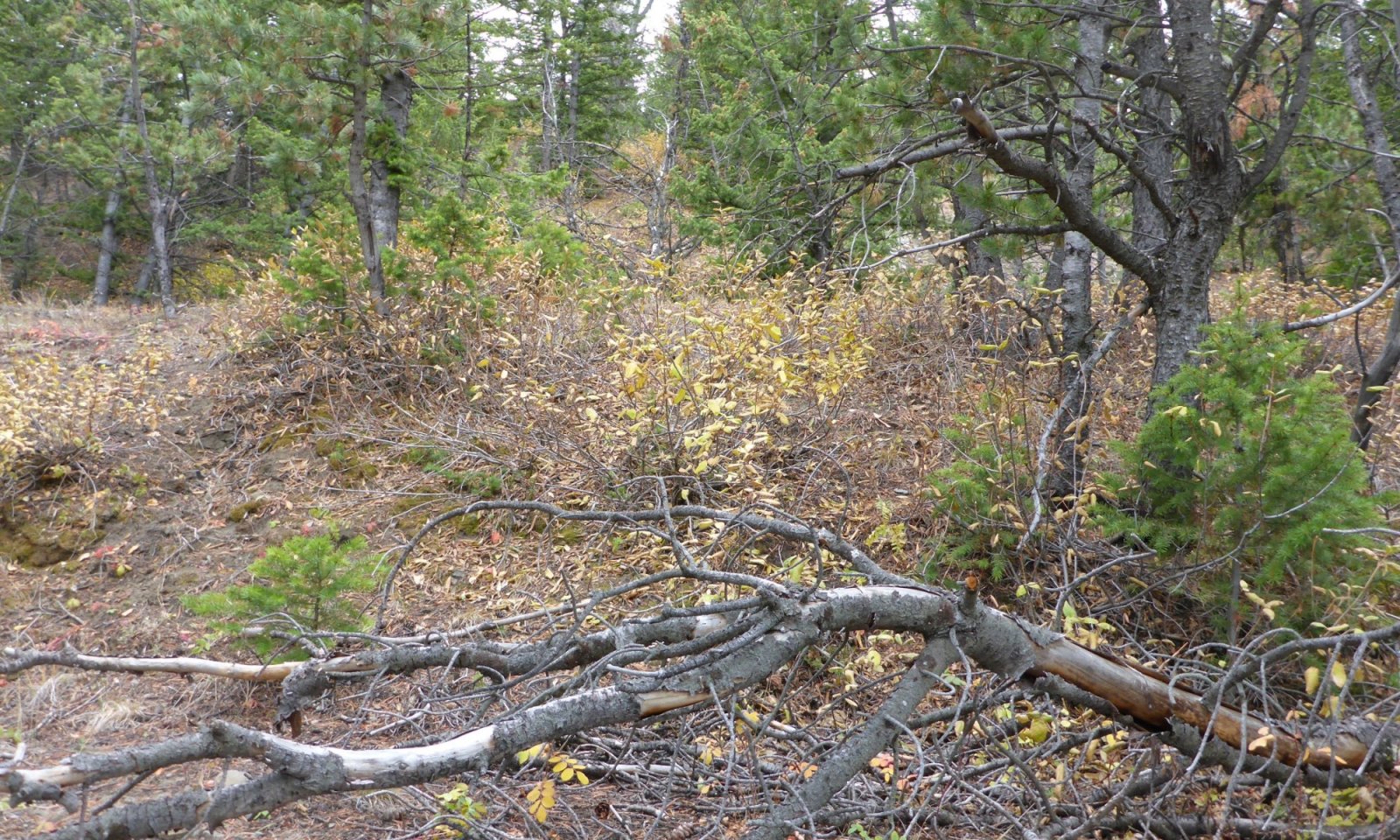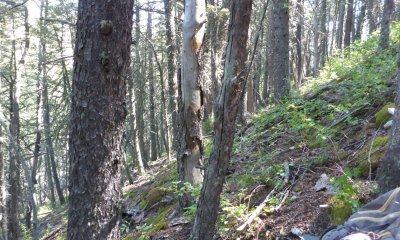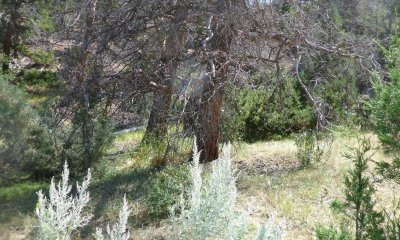
Upland Warm Woodland Group
Scenario model
Current ecosystem state
Select a state
Management practices/drivers
Select a transition or restoration pathway
-
Transition T1A
Fire suppression causes a decrease in limber pine and increases the density of Douglas-fir.
More details -
Transition T1B
Grazing impacts, ground disturbance, drought or insect pressure can degrade the under story and provide the opportunity and seed source for invasive species to establish.
More details -
Restoration pathway R2A
Thinning of existing timber stand with prescribed fire or selective harvest with under story management will transition this community towards reference.
More details -
No transition or restoration pathway between the selected states has been described
Target ecosystem state
Select a state
State 1
Reference



Description
Mature timber stand of timber with an under story of shrubs and herbaceous species. As the stand matures, the canopy closes and the under story decreases in composition. There is a successional process that this community proceeds through. however, in this state, the two most dominant stages will be captured.
Characteristics and indicators
This state is prominently mature stands of Douglas-fir and limber pine. The under story is a mixture of bunchgrass species, shrubs and a variety of forb species.
Resilience management
Fire plays a role in the health and successional pattern of this state. Fire can also play a part in the transition to other states in this ecological site. Frequency, intensity, and site conditions at the time of the burn will determine the direction this site will move.
Submodel
Description
The stand has matured, maintaining only a dense stand of Douglas-fir as the dominant species and can be the only species in the community. The soil surface has a significant duff layer or moss layer that has developed over time, reducing the native grasses and forbs in the area and leaves the site prone to evasion.
Characteristics and indicators
The charactorisitic is dog hair stands of Douglas-fir with only a small portion of native bunchgrasses, generally bluebunch wheatgrass, Idaho fescue and king spike fescue. The site is susceptable to cheatgrass and invasive forb.
Resilience management
Fire, disease/insects, or blow down are common events within these aging stands of timber. These stands are resilient and resistant to change until a significant impact to the stand occurs. When disturbances impact these communities, it is generally catastrophic locally (significant wildfire, tornado or microburts, disease/insect outbreak).
Submodel
Description
This community has shifted in over story to a limber pine community, with a degraded under story that is susceptible to invasive species.
Characteristics and indicators
This community is primarily herbaceous species of declining quality including sandberg bluegrass, prairie junegrass, and a few forbs, and then the remaining community is comprised of invasive or weedy species. There are a few shrubs in the community and limber pine is the main over story species. The major species of concern are thistles, cheatgrass, and a variety of local species varying by location.
Resilience management
The difficulty to manage weedy species due their aggressive growth patterns, ability to spread easily, and competitive nature with natives, make this site difficult to change with general management.
Submodel
Mechanism
Fire suppression has led to aging, dense stands of timber across much of the forested lands. In this community, the lack of fire has led to the existence of dog-haired, maturing stands of Douglas-fir. With shading from maturing Douglas-fir, and minus the propagating fires for limber pine, limber pine is pushed out leaving a Douglas-fir community.
Constraints to recovery
Slope, location, and surrounding sites are the limits to recovery. Lack of viable seed or nursery stock or the presence of invasive species such as cheatgrass are also vulnerabilities or threats to the recovery of this community.
Context dependence
Pre-existing community composition is key. Fire suppression in a high juniper area may lead this community to a juniper dominated condition.
Mechanism
Within the Limber Pine dominated community, understory burns or other disturbances can impact the vegetative cover leaving the community vulnerable to invasive species. Heavy grazing pressure, insects, drought and other disturbances can both impact the community making it susceptible as well as introduce the undesirable species.
Constraints to recovery
The ability to control some invasive species limits the ability to recover a community. Access to do integrated pest management or weed control as well as limitations in reseeding the community can make it difficult as well.
Mechanism
The use of prescribed fire or selective harvest to thin the timber stand and allow succession of other woody species in the canopy helps to improve this site. Litter or under story management will help to encourage more under story growth on the site. Proper grazing management will help prevent community degradation and will aid in the site recovery following treatments.
Relevant conservation practices
| Practice | External resources |
|---|---|
|
Critical Area Planting |
|
|
Prescribed Grazing |
|
|
Grazing Land Mechanical Treatment |
|
|
Upland Wildlife Habitat Management |
|
|
Forest Stand Improvement |
|
|
Forest Land Management |
|
|
Prescribed Forestry |
|
|
Grazing management to improve wildlife habitat |
|
|
Forest stand improvement pre-treating vegetation and fuels |
|
|
Forest Stand Improvement, Prescribed burning |
|
|
Forest Stand Improvement to Reduce Wildfire Risk |
|
|
Forest stand improvement pre-treating vegetation and fuels preceding a prescribed fire |
Model keys
Briefcase
Add ecological sites and Major Land Resource Areas to your briefcase by clicking on the briefcase (![]() ) icon wherever it occurs. Drag and drop items to reorder. Cookies are used to store briefcase items between browsing sessions. Because of this, the number of items that can be added to your briefcase is limited, and briefcase items added on one device and browser cannot be accessed from another device or browser. Users who do not wish to place cookies on their devices should not use the briefcase tool. Briefcase cookies serve no other purpose than described here and are deleted whenever browsing history is cleared.
) icon wherever it occurs. Drag and drop items to reorder. Cookies are used to store briefcase items between browsing sessions. Because of this, the number of items that can be added to your briefcase is limited, and briefcase items added on one device and browser cannot be accessed from another device or browser. Users who do not wish to place cookies on their devices should not use the briefcase tool. Briefcase cookies serve no other purpose than described here and are deleted whenever browsing history is cleared.
Ecological sites
Major Land Resource Areas
The Ecosystem Dynamics Interpretive Tool is an information system framework developed by the USDA-ARS Jornada Experimental Range, USDA Natural Resources Conservation Service, and New Mexico State University.




